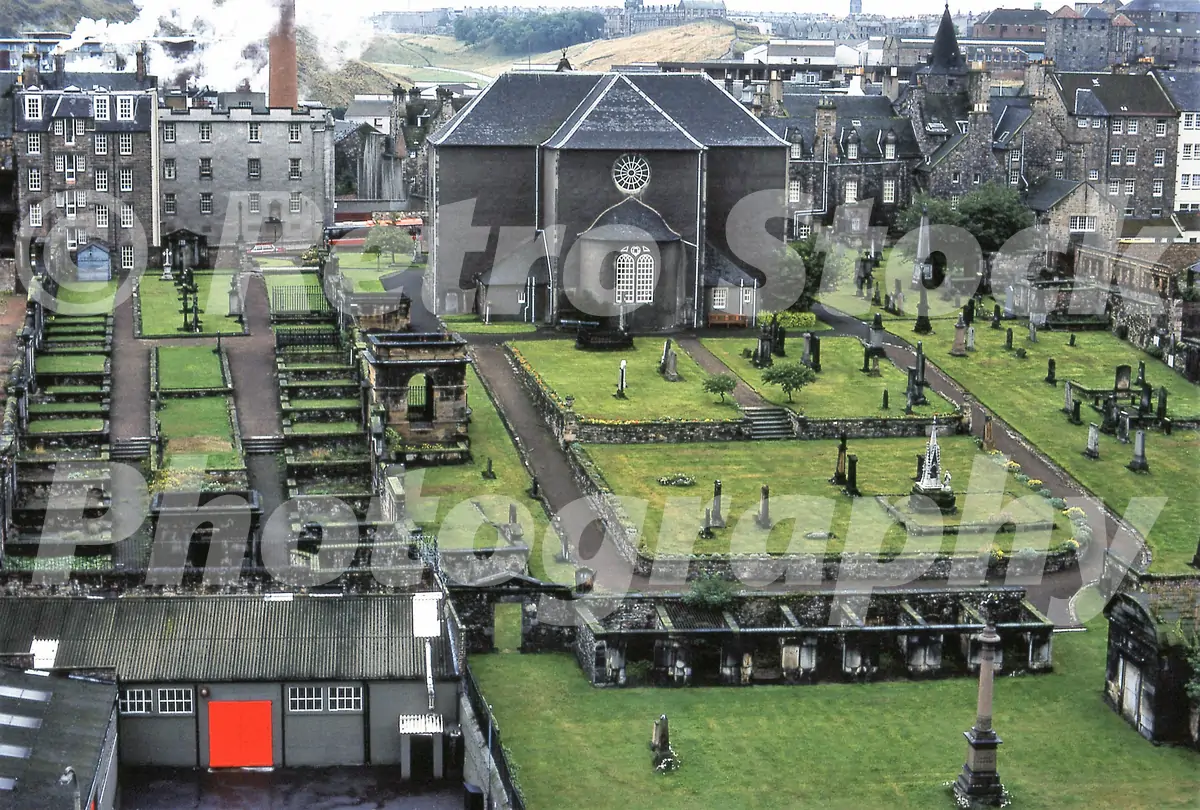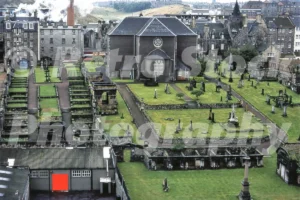Tucked away along the eastern stretch of Edinburgh’s historic Royal Mile, Canongate Kirkyard is a tranquil and evocative burial ground that reflects the rich tapestry of Scotland’s past. Surrounded by the modest but elegant Canongate Kirk—completed in 1691—the kirkyard has served as the final resting place for some of the nation’s most influential figures, as well as countless citizens whose stories remain untold.
Origins and Setting
The kirkyard came into use in the late 17th century, shortly after the construction of Canongate Kirk to serve the parish of Canongate. At that time, the Canongate was a distinct burgh outside the city walls of Edinburgh, with its own governance and character. The churchyard expanded gradually over the centuries, eventually containing over 60 tombs, 140 stone monuments, and numerous plaques commemorating those buried there.
In 1952, the church grounds were subtly reimagined with the removal of the old church hall to create a sunken memorial garden. At the centre of this garden stands the ancient Burgh Cross of Canongate, dating back to around 1128. It offers a symbolic link between medieval Edinburgh and the Enlightenment-era figures interred nearby.
Notable Burials
Among the most famous residents of Canongate Kirkyard is Adam Smith (1723–1790), the renowned economist and author of The Wealth of Nations. His grave lies close to the church, and today it attracts a steady stream of visitors, many of whom leave coins as a gesture of respect.
Another important literary figure buried here is Robert Fergusson (1750–1774), a gifted poet who had a profound influence on Robert Burns. Fergusson died tragically young and was originally buried in an unmarked grave. Burns later paid for a gravestone in his honour, which remains a prominent feature of the kirkyard.
The kirk is also closely associated with Thomas Wilkie, its first minister, and William Lothian, one of the founders of the Royal Society of Edinburgh. Both are interred here, and their graves remind visitors of the kirk’s role in Edinburgh’s spiritual and intellectual life.
Other notable burials include George Drummond, a six-time Lord Provost of Edinburgh who helped shape the city’s Georgian New Town; James Bonar, a scholar and excise official; and David Smythe, Lord Methven, a distinguished Scottish judge.







Reviews
There are no reviews yet.